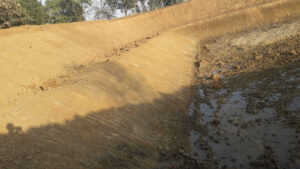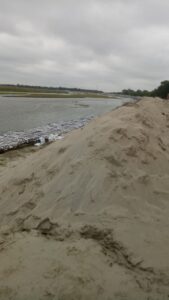Canal Work Project – IGI Airport Delhi Case Study
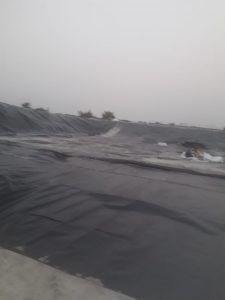
Canals are essentially human-made waterways or artificial channels mainly used for irrigation, and shipping. Within the context of agriculture, canals help with water conveyance for irrigation. Urbanization, industrialization, and increased agricultural production worldwide involve improved methods of water containment and transportation. Especially in areas where water doesn’t in its wild exist at the amount required for irrigation, canals are the go-to technique to move water. In India, canal irrigation may be a primary source of irrigation following wells and tube wells.
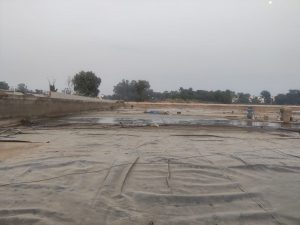
Unlined canals vanish the purpose of building irrigational channels. It’s essential to line the canals with an impermeable layer to resist water flow and reduce loss thanks to seepage. Historically canals were lined with either earthen lining or pave lining. Traditional canal lining is of compacted earth or soil cement lining. Whereas the pave lining is of brick, boulder, concrete, or maybe plastic.
Product – Ocean Geomembrane-1.0mm
Quantity – 4000sqmtr
Location – IGI Airport, New Delhi
Problem
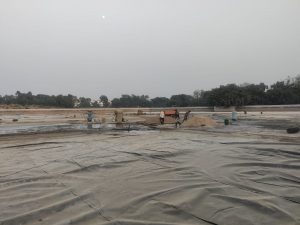
As clean water becomes harder to accumulate, the necessity for safe water containment and transport grows. This problem is exacerbated by urban water demands and increased agricultural production in remote areas around the world. There’s a requirement for vast amounts of water in areas where water doesn’t naturally exist at the amount needed. To mitigate this problem, canals are constructed to move water from the source to where it’s needed. Historically, many of those canals are either earthen or concrete-lined. Earthen canals, while relatively inexpensive to construct, lose 50 percent or more of the water they transport to seepage. They are also susceptible to erosion, vegetative growth, and other problems that greatly reduce their effectiveness over time. Concrete canals solve the issues of abrasion and vegetative growth but are more costly to construct and susceptible to cracking over time, leading to significant loss of water to seepage. A concrete-lined canal should lose 30 percent of water to seepage tons of cash is spent with not tons of resources gained.
Solution
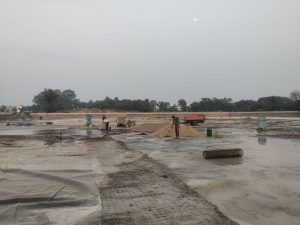
Geosynthetics, either alone or in conjunction with a concrete veneer, can greatly increase the effectiveness of a canal lining system. Not only are erosion and vegetative intrusion mitigated, but leakage is greatly reduced as compared to a concrete alone system. While the concrete veneer should crack over time, the geomembrane remains in situ underneath the veneer to stop seepage until the concrete is often repaired. Additionally to geomembranes, geotextiles could also be used underneath the geomembrane to cushion it from rocky or uneven subgrade. Geogrids could also be wont to support the liner system over poor subgrade.
Geomembrane canal liners could also be left exposed or could also be protected with a concrete cover. Most geomembranes are UV stabilized and may remain exposed for an extended length of your time with no decline in their level of performance. However, because exposed geomembranes are more vulnerable to damage from such things as rocks, debris, equipment, animal intrusion, and vandalism, most geosynthetic lined canal systems should be protected with a concrete cover or, at minimum, an earthen ballast. For such applications, the protective concrete covering could also be cast in place with reinforcing steel, pumped into geotextile forms, precast in panels, or spray applied.
Geomembranes are compatible not just for new construction, but also for lining over existing earthen or concrete canals which will be cracked and leaking. Different sections of the canal could also be repaired over time to scale back leakage at the critical points if the present budget doesn’t leave an entire relining. While taking care of the canal within the area surrounding the IGI Airport, Ocean Global used Geomembranes of 1.0mm to make sure that the water is transported in the absolute best manner with no leakage or wastage.

